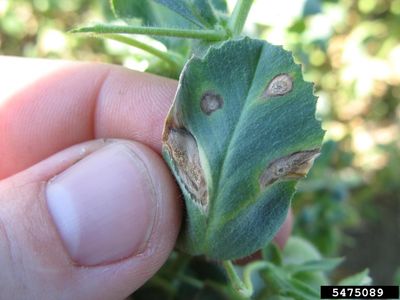What is Pea Asochyta Blight?
Ascochyta blight of peas is a fungal infection that can be caused by three different fungus species. Each produces a different set of symptoms, but it is also possible to see all three infections in one plant or bed: Mycosphaerella blight. This infection produces small purple spots on pea plant leaves as well as on the stems and pea pods. On the leaves, the spots grow larger over time and turn black. Leaves eventually dry out and die. Ascochyta foot rot. Producing similar spots on leaves, foot rot also affects the stem and roots. It causes dark purple to black spots on lower foliage, on the lower part of the stem, and on the upper parts of the roots. This causes the plant to mature too soon. Leaf and pod spot. This causes foliage and pod spots that look a little different. The spots are tan, sunken, and edged in black.
Preventing and Managing Peas with Ascochyta Blight
Ascochyta blight spreads through infected seeds and overwintered and infected plant material. Soil infected with this material that splashes onto healthy plants can lead to a spread of the disease. Infections are more likely to occur during wet conditions, but the fungi do not favor any particular temperature range. The first step in preventing the blight is to start with seeds that are certified to be disease-free. There are no varieties that are resistant to the fungi. Keep your pea plants separated enough that air can flow through and limit the collection of moisture on leaves and pods. Plant them in areas that drain well to prevent standing water and avoid overhead watering. If you end up with lesions characteristic of ascochyta blight, remove the infected plants and dispose of them. There is no pea ascochyta treatment, so your plants that are infected will be ruined and you will have to start over. Make sure you clean up and get rid of as much plant debris as possible at the end of the season and till the soil well to bury any remaining fungi that may overwinter.
